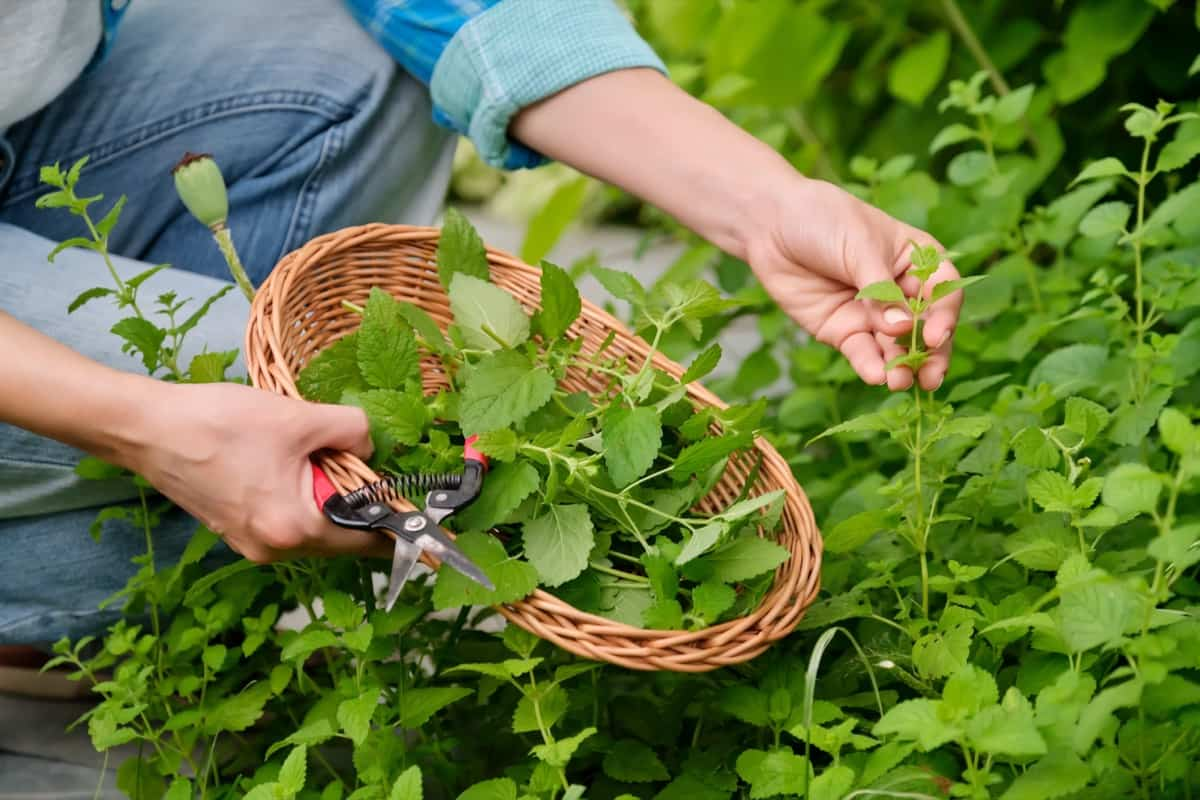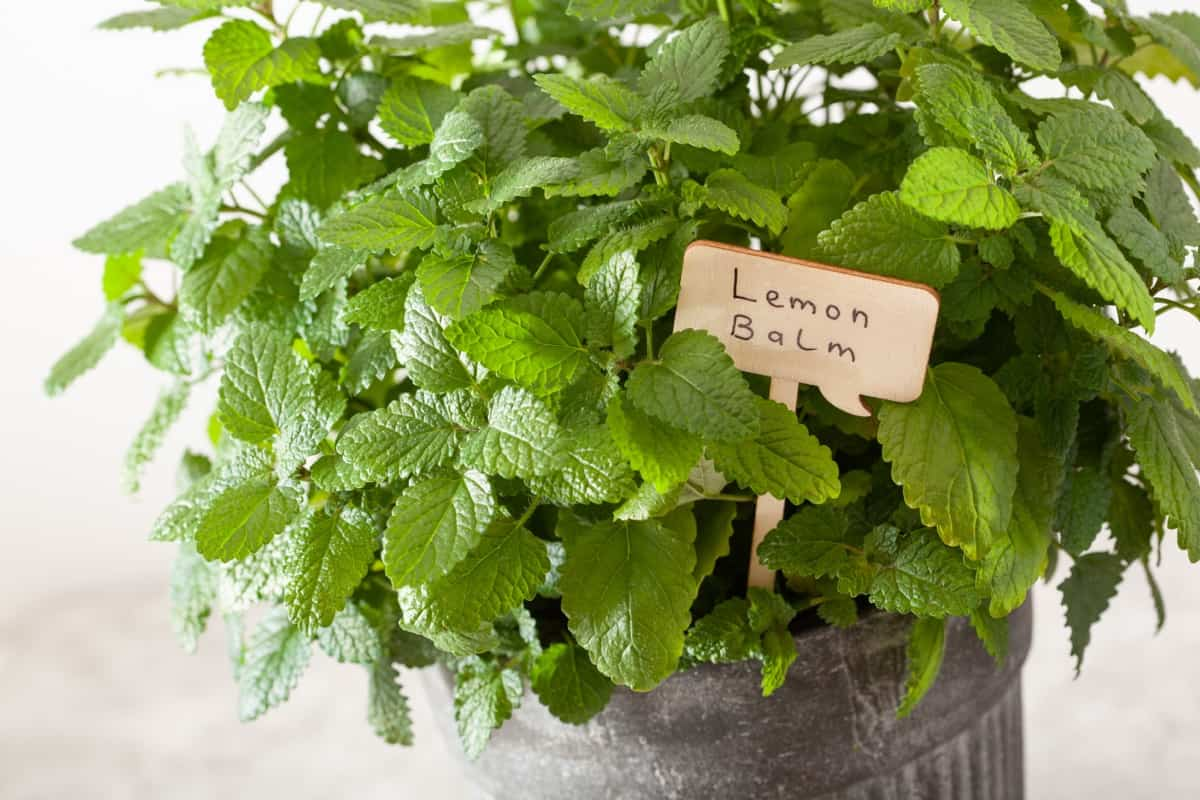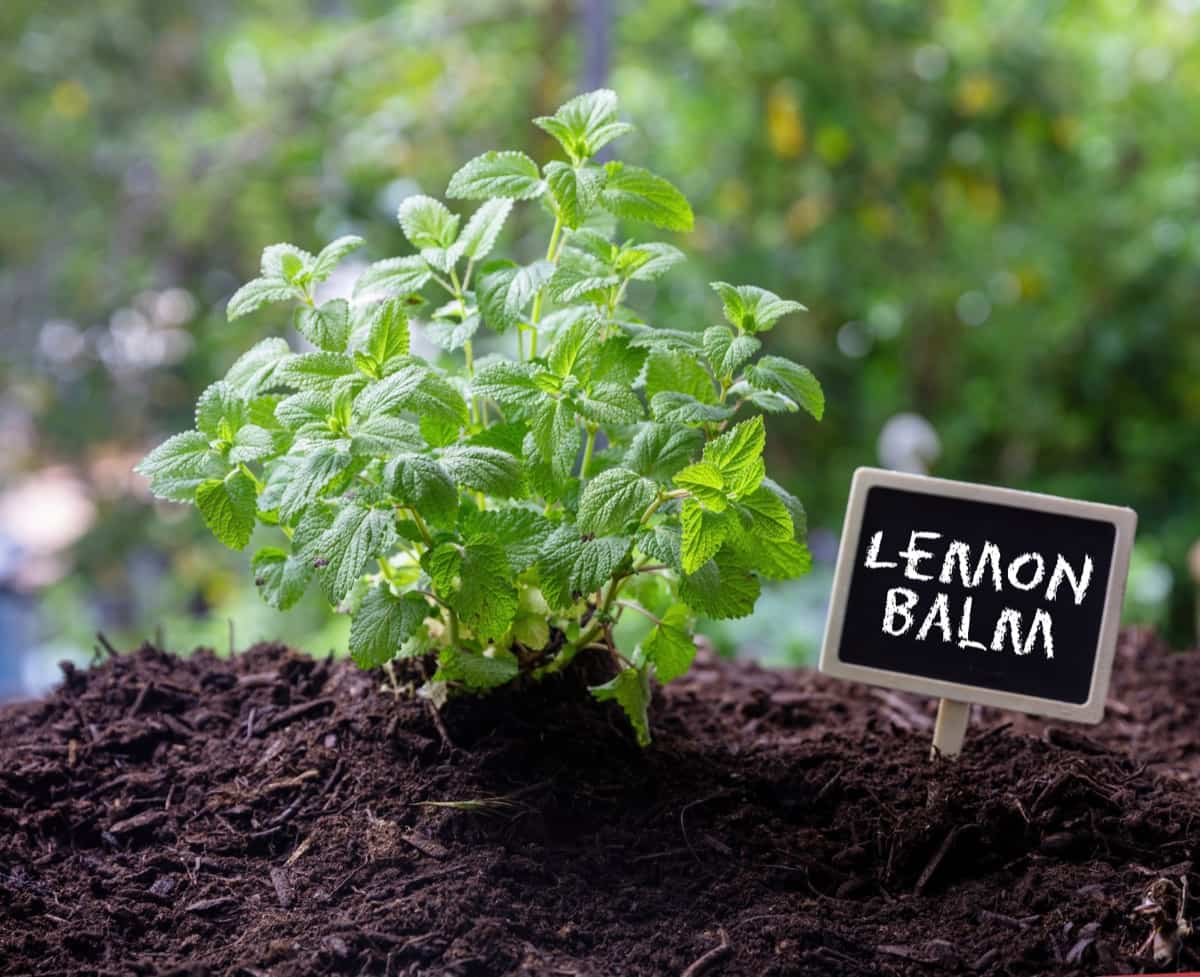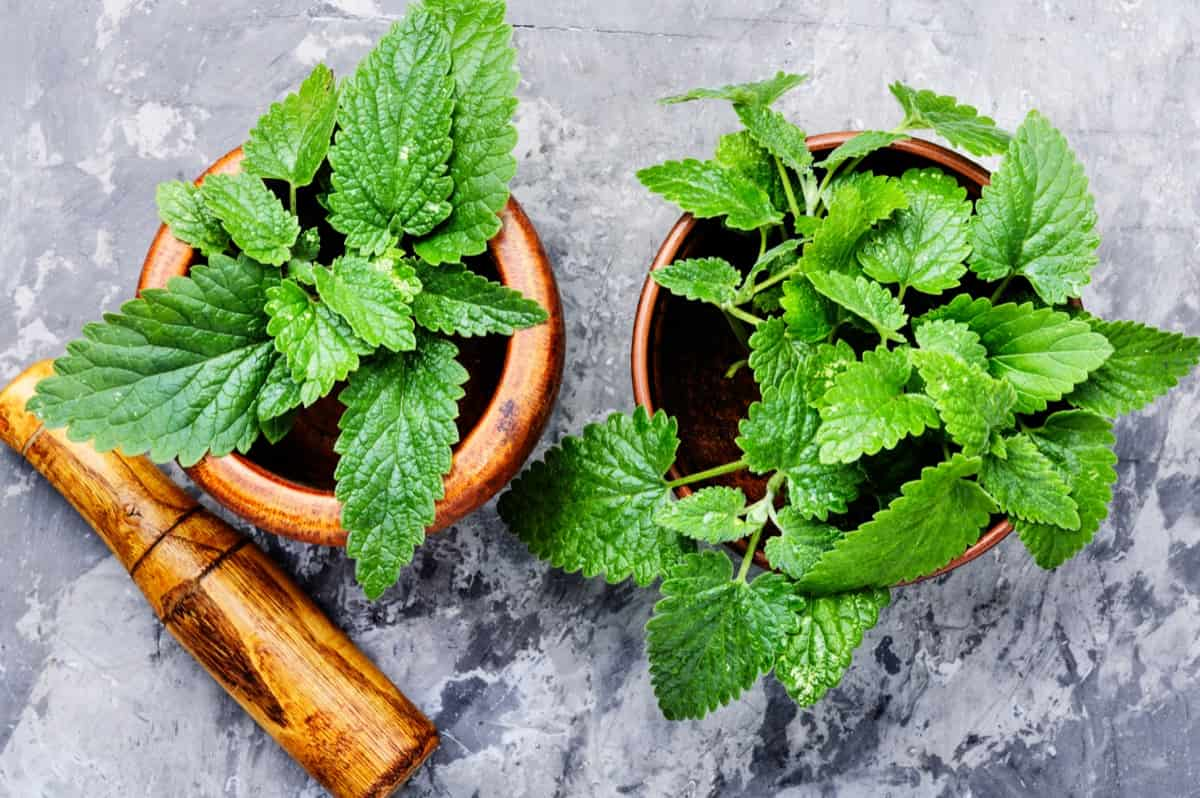Lemon Balm is a beautiful addition to any garden and offers numerous benefits for your health and well-being. Following the planting instructions, you can cultivate Lemon Balm in your backyard or indoors. Remember to choose a suitable location with well-drained soil and partial shade for optimal growth.

Regular watering and occasional fertilization will keep your plant healthy and vibrant. Pruning regularly will help prevent it from becoming invasive. Harvesting the leaves when they are young and tender will give you the best flavor for culinary use or making herbal teas.
How to Grow and Care for Organic Lemon Balm
Step-by-step Guide to Planting Lemon Balm Organically
Choose the perfect location for your Lemon Balm plants. Find a spot that receives full sun or partial shade, as Lemon Balm thrives in these conditions. Ensure the soil is well-drained to prevent waterlogging, which can harm the plant’s health. Prepare the soil by removing weeds and loosening it with a garden fork or tiller. Lemon Balm prefers fertile soil, so add organic compost or aged manure to enrich it further.
Sow Lemon Balm seeds directly into the prepared soil or transplant seedlings from pots. If sowing seeds, sprinkle them evenly over the area and lightly cover them with a thin layer of soil. Water gently but thoroughly after planting. Space each plant about 12-18 inches apart to allow enough room for growth. This will prevent overcrowding and ensure good air circulation around each plant.
Essential Tips for Growing Organic Lemon Balm
First and foremost, choose a location that receives at least six hours of sunlight per day. Lemon Balm thrives in full sun; prepare the soil by adding organic matter. This step is crucial for providing the essential nutrients Lemon Balm needs to grow strong and healthy. Once your soil is prepared, sow the Lemon Balm seeds or transplant seedlings into the ground. Remember that Lemon Balm spreads vigorously, so leaving enough space between plants—about 18 inches apart should do.
Watering is another critical aspect of growing organic Lemon Balm. While this herb prefers moist soil, overwatering can lead to root rot. It’s best to water deeply once or twice a week rather than lightly every day. To maintain optimal growth and health of your Lemon Balm plants, consider using natural pest control methods such as companion planting with herbs like basil or marigold flowers. These plants repel pests while attracting beneficial insects. Regular pruning will keep your organic Lemon Balm thriving.
In case you missed it: 10 Common Herb Gardening Mistakes and How Every Beginner Should Avoid Them

Growing Lemon Balm in pots
Choose a pot 12 inches wide with drainage holes at the bottom. Lemon Balm can spread quickly, so give it enough room to grow. Fill the pot with well-draining soil mixed with compost to provide nutrients. Place your Lemon Balm pot in an area that receives full sunlight for 6 hours daily. Water the plant regularly, ensuring the soil is not completely dry between waterings.
Lemon Balm is known for its rapid growth, so regular pruning will help keep it in check and encourage bushier growth. Look for pests like aphids or spider mites, which occasionally bother Lemon Balm plants. Use organic pest control methods such as neem oil or insecticidal soap to protect your plant if necessary.
How to grow Lemon Balm from seed
Once you have your seeds, fill small pots or seed trays with a well-draining potting mix. Next, sow the seeds on the soil’s surface and lightly press them down. Lemon Balm seeds are tiny, so be careful not to bury them too deeply. Gently water the soil to ensure its evenly moist but not saturated. Lemon Balm prefers temperatures between 15-21°C. Monitor moisture levels and water as needed to keep the soil consistently damp. Within 1-3 weeks, you should start seeing sprouts emerge from the soil.
Once they reach about two inches tall, thin out any overcrowded seedlings by gently removing them from around stronger ones. As your Lemon Balm plants grow, gradually acclimate them to more direct sunlight over several days before transplanting them into larger containers or your garden bed outdoors. With regular watering and occasional feeding with organic fertilizer during the growing season, your Lemon Balm will flourish and provide fragrant leaves that can be used for culinary purposes or enjoyed simply for their refreshing scent.
Growing Lemon Balm indoors
Growing Lemon Balm indoors is a great way to enjoy its fresh scent and reap its numerous health benefits all year round. Choose a suitable location for your Lemon Balm plant. It thrives in bright, indirect sunlight, so find a spot near a window where it can receive plenty of light without being exposed to direct sunlight.
Next, select the right container for your Lemon Balm. Ensure it has good drainage holes and is large enough to accommodate the plant’s root system as it grows. When it comes to soil, use a well-draining potting mix enriched with organic matter. Lemon Balm prefers slightly acidic soil with a pH between 6 and 7.
Ensure that excess water drains out properly from the bottom of the pot. Regular pruning will help keep your Lemon Balm bushy and prevent leggy growth. Pinch off any yellow or damaged leaves regularly to maintain overall plant health. Consider using artificial lighting if natural light is limited in your indoor space. Supplemental grow lights can provide the necessary light spectrum for healthy growth.
In case you missed it: Top 16 Perennial Herbs You Can Plant Once and Enjoy for Years

Organic Lemon Balm: Soil Preparation and Planting Techniques
When growing organic Lemon Balm, soil preparation is crucial in ensuring your plants thrive. Start by selecting a well-drained location that receives ample sunlight throughout the day. Lemon Balm prefers loamy or sandy soil with a pH between 6 and 7. Before planting, remove any weeds or debris from the area and loosen the soil using a garden fork or tiller.
Consider incorporating organic matter such as compost or aged manure into the soil to provide essential nutrients for your Lemon Balm plants. Once the soil is prepared, it’s time to plant your Lemon Balm. Dig holes slightly larger than your seedlings’ root ball, ensuring they are spaced about 12-18 inches apart. Gently place each seedling into its hole and backfill it with soil, careful not to bury them too deep. Apply mulch around each plant to help retain moisture.
Remember to monitor moisture levels during dry periods; consistent watering is crucial for healthy growth. In addition to proper planting techniques, consider using natural fertilizers like compost tea or seaweed extract every few weeks during active growth periods. These organic amendments will help nourish your Lemon Balm plants without introducing harmful chemicals into their environment.
Watering Practices for Healthy Organic Lemon Balm
Proper watering practices will help ensure their health and vitality. First and foremost, it’s important to remember that Lemon Balm prefers consistently moist soil but does not tolerate waterlogged conditions. Overwatering causes root rot and other issues, so be mindful of how much water you provide.
To determine if your Lemon Balm needs watering, check the top inch of soil. If it feels dry to the touch, it’s time to water. However, if the soil still feels slightly damp, hold off on watering for a little longer. When watering, aim for deep soaking rather than light sprinkling. This encourages deeper root growth and helps the plant withstand periods of drought better.
You may need to increase watering frequency during hot summer or extended dry spells. Monitor your plants closely during these times and adjust accordingly. Remember that every garden is unique, so paying attention to individual plant needs is crucial rather than relying on a set schedule. Observing your Lemon Balm regularly will help you develop a good understanding of its specific moisture requirements.
Natural Pest Control for Organic Lemon Balm Cultivation
Regarding growing organic Lemon Balm, pest control can be a challenge. However, with the right techniques and practices, you can keep these pesky invaders at bay without relying on harmful chemicals. One effective method is companion planting. You create a diverse environment that naturally deters pests by interplanting Lemon Balm with other pest-repellent herbs such as basil or lavender.
The strong scents of these companion plants confuse and repel insects, reducing the risk of infestation. Another useful approach is homemade insecticidal sprays from common kitchen ingredients like garlic or neem oil diluted in water. These solutions act as repellents against pests while protecting your plants and the environment. Encouraging beneficial insects in your garden is also crucial for natural pest control.
In case you missed it: Top 10 Fast-Growing Herbs You Can Grow from Seeds

Ladybugs, lacewings, and praying mantises are beneficial insects that feed on pests that may attack your Lemon Balm plants. You can attract them by planting flowers like marigolds or creating small habitats like bug hotels. Regularly inspecting your Lemon Balm plants is essential to catch any signs of infestation early on. Look out for yellowing leaves or distorted growth patterns, which could indicate an insect problem. If you spot any pests, manually remove them or use sticky traps around the plant to catch flying insects.
Pruning and Maintaining Organic Lemon Balm: Expert Advice
Pruning and maintaining organic Lemon Balm are crucial to keeping your plant healthy and thriving. Expert advice on properly caring for your Lemon Balm can make all the difference in its growth. Regarding pruning, regular trimming is essential for promoting bushier growth and preventing leggy stems. You should use clean, sharp pruning shears to avoid introducing diseases.
To maintain a neat appearance, trim back the tips of the stems every few weeks during the growing season. In addition to regular pruning, proper maintenance involves monitoring for pests and diseases. Keep an eye out for common culprits like aphids or spider mites. If you notice any signs of infestation, immediately use organic pest control methods such as neem oil spray or insecticidal soap.
Regular watering is another key component of maintaining healthy Lemon Balm plants. Aim to keep the soil moist but not waterlogged. It’s important not to overwater as this can lead to root rot. Remember to fertilize your Lemon Balm. Use an organic fertilizer specifically formulated for herbs once per month during the growing season. This will provide essential nutrients that promote vigorous growth and a strong plant aroma.
In case you missed it: Secret Tips to Create the Most Fragrant/Aromatic Herb Garden

Optimal Sunlight and Temperature Conditions for Lemon Balm
Sunlight is crucial for the growth of Lemon Balm. This herb loves bright light but can also tolerate partial shade. Ideally, it should receive at least six hours of direct sunlight daily. If you’re growing Lemon Balm indoors, place it near a window where it can soak up ample sunlight. When it comes to temperature, Lemon Balm prefers moderate climates. It thrives in temperatures ranging from 15°C to 24°C.
While this herb can withstand some heat and cold, extreme temperatures may cause stress or damage to the plant. If you live in an area with hot summers or harsh winters, consider protecting your Lemon Balm. You can use mulch around the base of the plant during winter months or move potted plants indoors during freezing temperatures. Providing your Lemon Balm with proper sunlight and temperature conditions ensures its healthy growth and abundant harvests of fragrant leaves throughout the season.
Fertilizing Organic Lemon Balm: Dos and Don’ts
Fertilizing your organic Lemon Balm is essential for its growth and overall health. Opt for natural and organic fertilizers like compost or well-rotted manure. These options are nutrient-rich and won’t introduce harmful chemicals into the soil. Lemon Balm doesn’t require heavy feeding, so it’s best to moderate fertilizer. Over-fertilizing can lead to excessive leaf growth at the expense of flavor.
Fertilize Lemon Balm in early spring before new growth or after harvesting a major crop during summer. This will provide adequate nourishment when the plant needs it most. Synthetic fertilizers may provide quick results but can negatively affect your Lemon Balm and the environment. While nitrogen is essential for plant growth, too much can produce lush foliage with less aroma and taste. Lemon Balm prefers a balanced nutrient intake, so excessive phosphorus can disrupt this equilibrium and hinder healthy development.
Harvesting Organic Lemon Balm
When it comes to harvesting, timing is key. The best time to harvest your Lemon Balm is when the plant has reached its peak growth just before it starts flowering. To harvest the leaves, cut off the stems about 2-3 inches above the ground using sharp scissors or pruning shears. Be sure not to remove more than a third of the plant at once, as this can stress it and inhibit further growth.
In case you missed it: Best Herbs for Tea Garden: What to Grow in a Tea Garden

Conclusion
Growing and caring for Lemon Balm is a rewarding experience that can bring beauty and functionality to your garden. Following the planting instructions and providing proper care, you can enjoy an abundant harvest of Lemon Balm leaves throughout the growing season. Remember to choose a suitable location with well-drained soil and partial sun for optimal growth. Regular watering, occasional fertilization, and pruning will help maintain the plant’s health and vigor. Whether you use it in teas, culinary creations, or natural remedies, Lemon Balm will surely add zest to your life.
- How to Grow Hibiscus from Flower
- Plantation Ideas for Home Decoration: A Beginners Guide
- Flower Garden Designs and Layouts for Beginners
- Planting and Spacing Techniques in Papaya: A Beginner’s Guide
- Growing Gold: Essential Techniques for Planting Pineapples
- How to Make Kalanchoe Plant Bushy: Home Remedies and Solutions
- 11 Reasons Why Your Gardenia is Not Blooming: Home Remedies and Solutions
- Eco Elegance: The Guide to Designing a Drought-Tolerant Landscape
- Gardening on a Slope: Strategies for Hillside Landscaping
- Nourish and Flourish: Top Organic Mulches for Thriving House Plants
- Everything You Want to Know about Indian Mogra Flower: Discover Uses and Growing
- Green Thumb Success: Expert Tips for Cultivating Greenhouse Pumpkins All Year Round
- Maximize Growth & Flavor: The Ultimate Guide to Companion Planting in Herb Gardens
- How to Control Rhododendron Problems Naturally: Home Remedies and Organic Ways to Fix Them
- Natural Magic: The Remarkable Benefits of Cinnamon for Plants
- Best Steps to Revive Dying Tulip with Natural and Organic Treatment
- 10 Reasons Why Your Angel Trumpet is Not Blooming: Remedies and Treatment
- How to Fix Periwinkle Leaf and Flower-Related Problems: Natural Remedies and Solutions
- How to Fix Zinnias Leaf and Flower Problems: Discover Natural and Home Remedies
- Organic Steps to Induce Lemon Tree Flowers: A Comprehensive Guide
- Bloom Booster: Crafting the Perfect Homemade Bougainvillea Fertilizer
- Optimizing Growth: A Guide to Applying NPK Fertilizer for Potted Plants
- 10 Best Homemade Fertilizers for Rubber Plant: DIY Recipes and Application Method
- How to Boost Female Pumpkin Flowers: Effective Steps for More Flowers and High Yields
- Transform Your Indoor Garden: Top Benefits of Pink Salt for Houseplants
- 10 Best Homemade Fertilizers for Peacock Plants (Calathea): Easy DIY Guide
- Unlock Blooms: 9 Reasons Why Your Potted Chrysanthemum is Not Blooming
- 8 Reasons Why Your Potted Hibiscus is Not Blooming: Fix it with Simple Solutions
- Unlock Blooms: 9 Key Reasons Your Potted Frangipani Won’t Flower
- 10 Reasons Why Is My Ice Plant Not Blooming: Remedies and Treatment
- 10 Reasons Why My Potted Hydrangea Not Blooming: Treatment and Remedies
- 10 Reasons Why is My Wisteria Not Blooming: Remedies and Treatment
- 10 Reasons Why is My Goldfish Plant Not Blooming: Remedies and Treatment
- Maximize Your Space: Ultimate Guide to Balcony Gardening with Grow Bags
- 10 Reasons Why Your Iris is Not Blooming: Remedies and Treatment
- 10 Reasons Why Your Anthurium Plant is Not Blooming: Treatment and Remedies